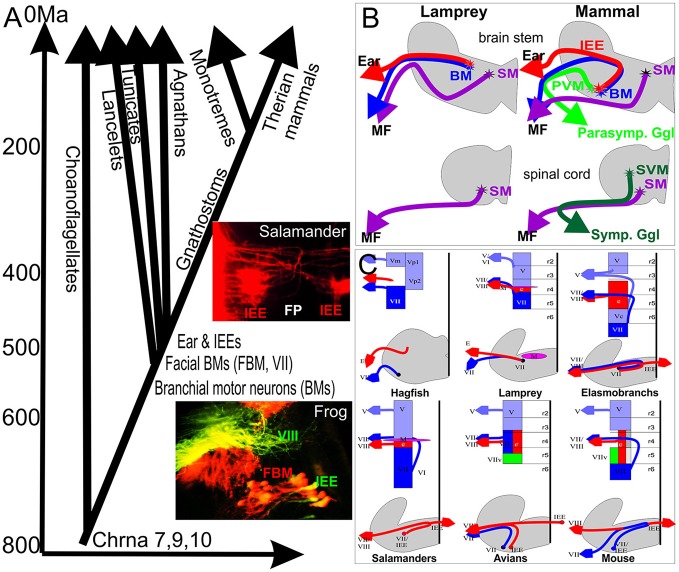Figure 1.
(A) The evolutionary context of vertebrate inner ear evolution, motor neuron, and nicotinic acetylcholine receptors is depicted against the molecularly defined history of major events in animal history. Evolution of nicotinic subunits associated with the vertebrate inner ear (9,10) coincides with the split of the single celled ancestor of animals from the single celled outgroup, the choanoflagellates (around 800 million years). Evolution of chordates (540 million years ago) coincides with the evolution of branchial motor neurons whereas evolution of an ear and inner ear efferents (IEEs) overlaps with the evolution of craniate IEEs (~520 million years ago). Inserts show overlap of IEEs (green, VIII) and FBMs (red) in frogs and bilateral distribution of IEEs with branching fibers in the flor plate (FP) in a salamander. (B) Jawless craniates like Lampreys apparently have only somatic motor neurons (SM) in the spinal cord and branchial motor neurons (BM) in the brain partially overlapping with IEEs. Mammals evolved in addition sympathetic visceral motor neurons (SVMs) in the spinal cord and parasympathic visceral motor neurons (PVMs) in the brainstem. (C) Laterality and cell and fiber distribution is shown for several vertebrates to emphasize that IEEs are unilateral in hagfish and lamprey (agnathans) but are bilateral with variable segregation of FBMs from IEEs through differential migration in most gnathostomes. Modified after (Fritzsch and Northcutt, 1993; Fritzsch, 1998b, 1999).

